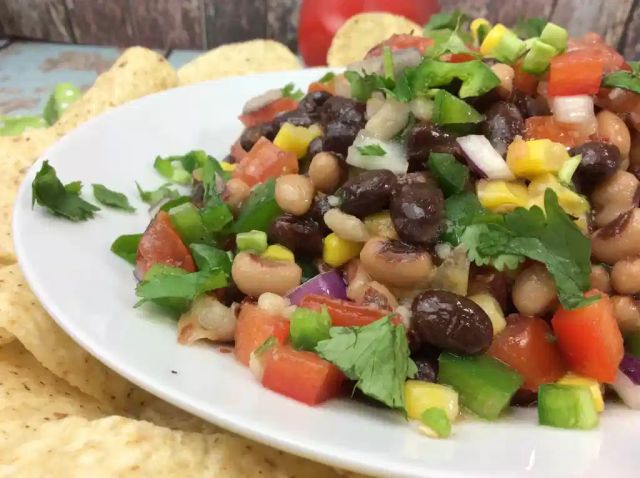This post contains affiliate links, which means I will make a commission at no extra cost to you should you click through and make a purchase. As an Amazon Associate I earn from qualifying purchases.
Gardening Tips for Black Eyed Peas? If you enjoy growing your own vegetables, you should consider growing up black-eyed peas. These peas are also called cowpeas, black-eyed beans, or blackeyes because of their pale-colored skin with a black spot similar to a black eye. These peas are originally from Africa. It is an ingredient widely used in the Southern United States, and Asian cuisine. There are several variants like pink-eyed peas. Black-eyed peas are easy to plant in your garden.

These legumes are high in protein, calcium, manganese, iron and high fiber content is low in cholesterol. Black-eyed peas prefer a soil that consists of sand, silt, and clay called loam. They grow in arid and semiarid, with well-drained soil.
Gardening Tips for Black Eyed Peas
Black eyed peas are pretty easy to grow, mostly hands off, but they do take a lot of time.
While black-eyed peas take roughly 80 to 100 days to produce mature, dried beans, they require very little watering, no fertilizer, and just occasional weeding. These work better in the southern states as it may be a bit challenging for a healthy crop of these legumes to have enough time for them to produce a harvest before the first frost of the Northern States.
I see it as a challenge in Wisconsin. They obviously need to be started inside, and early, before sending them out into the garden. If you aren't in my practically arctic state, you should have a much easier time of it.
Black Eyes Peas Basic Facts
Seed germinates in 8 to 10 days. The best temperature for germination is from 60 to 75 degrees Fahrenheit, but black-eyed peas will germinate from 40 to 80 F. As with bush beans, germination in ideal temperatures will take eight to 10 days, but it can take two weeks or more if soil temperatures are below 60 F.
Plant Black Eyes Peas in the spring, as they can only be grown in warm soil, with no risk of frost or cold, generally in the late spring and throughout the summer.
86 degrees Fahrenheit. This is a heat-loving vegetable that won't really take off until the air temperatures remain reliably warm.
You will want to grow 20-30 plants per person planning on eating them. You have to shell these buggers, like peas and it takes more plants than you would think.
First of all, it is traditional to kick off the new year with them - tons of recipes suggest it as a way to bring not only good luck, but prosperity.
These are best cooked, and are often served with greens, rice, and / or pork.
Before Planting
Clean the area of the old roots and shrubs. Add fertilizer in bands from 3 to 4 inches deep and 2 to 3 inches away from the seeds. Soak seeds all night before planting.
Tips for Black Eyed Peas: Planting
Sow seeds into soil 1.5 inches deep with a soil temperature of 65 Fahrenheit or above. Use a row of 30 to 36 inches apart, with seeds spaced 2 to 4 inches, or follow the instructions on the seed packet. Seeds germinate for 7 to 10 days. Avoid sow peas below other shadows crops; plants need direct sun. Water plants at least once a week. Try no to wet leaves; in this way, you avoid fungus diseases. If the weather is dry, water more frequently. Use general-purpose fertilizer once a month. The plants also will not need poles stuck into the ground like soybean plants.
Harvesting
Plants of black-eyed peas reach their maturity in 80 to 90 days. You can harvest tender leaves, very young pods, and dried peas. Pick dried peas when vines get dried. Few farmers grow up black-eyed peas to consume the leaves. You can prepare tender leaves boiled as if they were spinach. Tender leaves have higher protein than seeds.
Plant Diseases
Insects love leaves, tender pods, and dried peas. The most dangerous insects are weevils, adults, and larvae and the most dangerous disease is root-knot nematodes that drain the plant of its nutrients. Use repellents or insecticides to avoid and control plagues. Animals like deer, rabbits, and chickens eat plants too. Keep your plants protected. High heat and humidity are good conditions to develop bacterial and wild diseases. If the area has high humidity and heat, use fungicides.
Tips for Black Eyed Peas: Benefits
Black-eyed peas are highly nutritious and associated with many impressive health benefits. In particular, they may help support weight loss, improve heart health, and promote digestive health. They're also versatile, delicious, and easy to incorporate into a number of recipes as part of a healthy diet.
They are a rich source of complex carbs, which take longer to digest than simple carbs, provide energy and fiber which both help with weight loss. Black-eyed peas are also an excellent source of both Calcium and Iron.
These power packed little gems are really a great addition to any diet.
Easy Recipe for Black Eyed Peas
We have this one on our Operation40K site - it is a form of Texas Caviar! This is one of those super healthy, veggie power-packed treats that is great for any potluck or party. Texas Caviar lets you “eat the rainbow” and indulge in a serious protein punch as well with all the beans. We have to leave out the bell peppers because I have a food allergy but it really does add a little kick.
Check out the recipe here --> Texas Caviar Recipe

